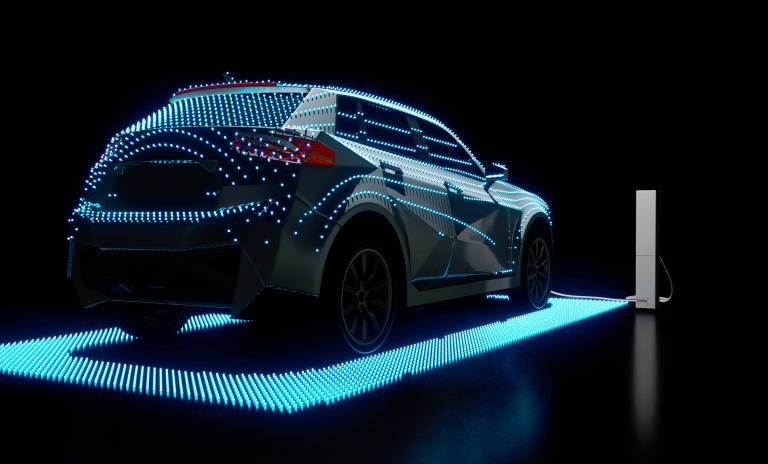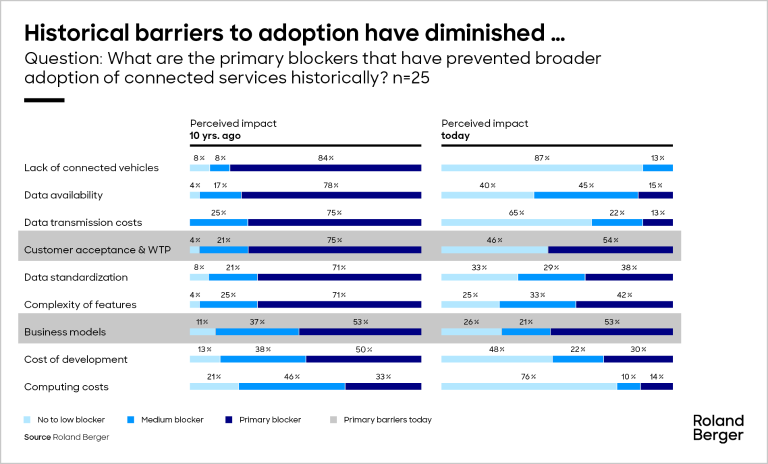As the automotive industry transitions toward software-defined vehicles (SDVs), software has moved from a supporting role to the core of innovation. However, while vehicle software complexity grows, most of it remains custom-built in-house, resulting in soaring costs.


Computer on Wheels: Unlocking the next chapter in connected services
After a disappointing launch ten years ago, connected services are now poised to take off
Not so long ago, connected services promised to revolutionize the automotive industry. But despite early ambition, reality lagged. In 2015, neither the infrastructure nor the business model could support mass adoption. The connected vehicle remained largely theoretical. Today, things have changed.

"When evaluating business models, it's crucial to separate the value of connected services from direct monetization — cost savings, loyalty, and efficiency gains can be just as important as new revenue streams."
Recent advances in connectivity, architecture, and real-time data processing have built the foundation for a robust service platform. Roland Berger, in collaboration with Connected Vehicle Systems Alliance (COVESA) and Geotab, recently surveyed 27 industry experts - including OEMs, suppliers, advisors, and dealers - finding that many of the historical blockers are no longer in play. The groundwork is finally ready.
Why connected services failed the first time
In any industrial transformation, five pillars must develop in tandem: technology, delivery capacity, customer interest and willingness to pay, and a working business model. In 2015, none of these were fully mature.
Connectivity was hampered by limited bandwidth and a sparse base of connected vehicles. Meanwhile, consumer interest was low, and offerings were poorly conceived; subscription fees for additional services like heated seats failed to resonate. Most significantly, business models were either missing or unviable.
Why the outlook is different in 2025
Most of these issues have now been resolved. Connectivity is standard, infrastructure has matured, and data processing enables meaningful services. Computing and data transmission costs have also dropped sharply.
OEMs have redefined connected services from afterthoughts to core digital products. Meanwhile, open-source tools, edge computing, and scalable software architectures are driving down costs and unlocking new potential. Consumers increasingly expect connected services, especially those integrating third-party apps or offering remote vehicle access.
"OEMs must empower dealers to champion and articulate digital services — meeting consumers and fleets exactly where they are in their journey."
The weakest links today: Mindset and monetization
Two pressing challenges remain: Convincing customers to pay and finding viable business models. Though customer willingness has improved – only 54% now see it as a barrier compared to 96% a decade ago – 74% of respondents to our survey still cite monetization as a major hurdle.
The industry remains split. Some believe time and exposure will drive adoption, while others remain skeptical that consumer subscriptions will ever be a sizeable revenue stream.

"A decade ago, we had the ambition but lacked the ingredients. Today, with scalable platforms, mature tech, and greater customer openness, connected services are finally ready to scale."
Suppliers are optimistic things will pick up: half expect connected services to account for over 10% of OEM revenue within a decade. OEMs are less convinced, but are experimenting with strategies, from embedded pricing to extended ‘free’ periods. A ‘freemium’ approach is promising, but loyalty and efficiency may offer more sustainable value.
What customers really want
Rather than striving to develop ‘killer’ apps, OEMs are likely to benefit more from focusing on quality, simplicity, and usefulness. From emergency assistance to vehicle maintenance, it’s about meaningful value. All survey participants cited user experience quality as the top factor, outpacing privacy concerns, price, or novelty.
“People want more options, like in their phone’s app store. The demand [for connected services] is there,” said one OEM executive director of platform architecture and prototyping.
From concept to scale: What needs to happen
To succeed, OEMs must rethink how they operate. That includes:
- Building modular, cloud-based architectures with real-time analytics
- Integrating digital teams across service design, data, and customer experience
- Partnering with cloud providers, startups, and even competitors
- Developing standardized platforms to enable scale and reduce developer friction
While the technical foundations are largely in place, a lack of go-to-market execution is the key remaining hurdle. Marketing and customer engagement, traditionally among OEMs’ core strengths, must now be leveraged to bring connected services to scale.
Register now to receive the full study “Computer on Wheels: Unlocking the next chapter in connected services” to learn more about why it has taken a decade for connected services to fully scale. Furthermore, you get regular news and updates directly in your inbox.


_person_144.png?v=852351)













_person_320.png?v=852351)